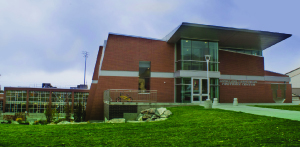As Austin Dalry, a 26-year-old University of Utah student, makes his way from the parking lot to his nearest class across campus, several lavish new buildings meet his eye. This is very different from the campus he was first introduced to back in 2007. The new buildings,such as state-of-the-art facilities from the athletic department to the education building to the David Eccles School of Business, have changed the landscape of the university forever.

“I can’t help but wonder,” he says as he shifts his backpack from one shoulder to the other, “how our school can afford these new buildings when my tuition has skyrocketed every year since I’ve been here.”
A fair question. It’s nothing new that the cost of higher education keeps going up. In the last decade, tuition has almost doubled. In 2003, annual tuition for a full-time local student at the University of Utah was $3,324. Today it is $6,511. This is a lot of money for students such as Austin who carry a full-time work load just to pay for school. “It’s taken forever and it’s only getting more and more expensive,” he adds.
But are the new buildings that Austin sees on campus the main cause of increased tuition? Campus officials say “No” because much of the cost of new buildings is paid for by wealthy corporations and individuals.
But while large organizations such as The Eccles Foundation and Rio Tinto have footed the bills for the new buildings, one can’t help but ask if these contributions should have been better used to make tuition more affordable.
“It’s definitely a sensitive balance,” says Ruth Watkins, University of Utah Senior Vice President of Academic Affairs. She says the new buildings attract world-class faculty who serve the students and provide an excellent learning environment.
So what, then, is the main driver of increasing tuition? The answer is simple: the economy. Like most things that have tanked in the economy since the Great Recession began in 2008, college costs have been hit as well. The bad economy cut into state revenues causing the state to become more reliant on tuition to supplement the losses.
According to the State Board of Regents, in 2008 Utah resident students paid roughly 37 percent of their school’s funding. Today, it’s 48 percent. This split varies depending on the type of institution and programs offered.
Things may be getting better, however, as the country slowly pulls itself out of economic recession. Tuition inflation is expected to plateau.
“We saw funding from the state for the System of Higher Education increase because the economy is doing better,” says Pamela Silberman, Director of Communications for the Utah Board of Regents. “Our goals are to increase participation and completion [of degrees]. And make it affordable.”
Sometimes, though, students are at fault for increasing their own college costs. Take note of that phrase in Silberman’s quotation above: “completion of degrees.” Many Utah students delay the completion of their degrees by taking fewer credits to make time to work. That delay is financially self-defeating in two ways.
First, it delays their entrance into the serious work place and the higher salary that comes from their college degree.
Second, they miss out on a financial incentive many campuses offer–most state schools charge the same amount of tuition for 11 – 20 credits. Many students are not aware of this deal: it’s the same price to take 20 credits as 11, or 15 as well as 12. The one exception to this policy is the University of Utah which charges by credit hour but is working towards developing a similar range model.
To take advantage of this pricing system, Utah’s colleges and universities unveiled a new campaign in October called “Fifteen to Finish.” The schools are encouraging students to take 15 credits a semester instead of the usual 12 credits.
Taking 15 a semester means a student can complete an associates degree in two years and a bachelor’s in four, then get out in the job market and start earning. Now on average, it takes a student over six years to graduate from the University of Utah, and 40 percent of students who begin attending the U. never finish.

“It would be nice to pay the same amount for extra classes,” says 22-year-old senior Gina Terry. “I’ve never noticed the tuition increases at my school because I always took a different amount of credits.”
Terry is like many other students at the U. She works two jobs — one at the SLC Sports Complex and the other on campus — plus she carries a student loan from a previous college. “All my tuition for the U. has come out of pocket,” she says.
Just encouraging students to take more credit hours each semester, however, may not be so easy because of roadblocks the schools put up themselves.
“Sometimes it’s not even the workload that interferes with being able to take all the classes I need at once,” says 24-year-old senior Pete Stephens. “The classes I need are offered at times that interfere with my work schedule. Or some are only offered certain semesters.”
The University is considering many programs to help out, such as second-half semester classes, a comprehensive January/May semester, an increase in summer offerings, and the use of technology.
“Our single most important focus over the next few years,” says the U’s vice president Ruth Watkins, “is to get students to graduate.” The school has recently appointed a comprehensive task force to come up with solutions. “We are giving careful thought to what we can do for the additional scholarships,” she says. The money would come from private donations and alumni.
Things have begun to improve. The school has seen a five percent increase in its graduation rate over the last few years. Utah currently ranks as the third most affordable state for a four-year education, behind only Wyoming and Alaska, and the second most affordable for a two-year degree.
This may be a sign of better things to come. And perhaps with more student involvement, tuition breaks and the continued support from the Board of Regents, working students at the University of Utah can better afford to complete their education.
For additional info, please visit:
http://collegestats.org/colleges/utah/lowest-instate-tuition





